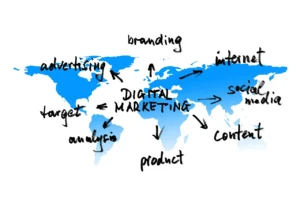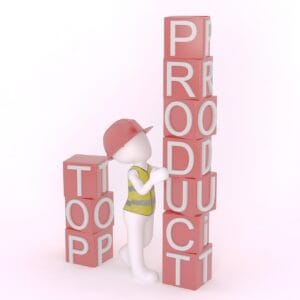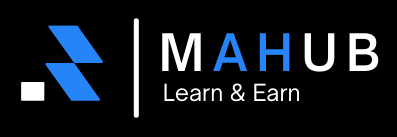The world of creating digital products for print on demand is full of exciting opportunities for creative entrepreneurs. Whether you’re an artist, designer, or entrepreneur, the print-on-demand (POD) business model allows you to turn digital designs into profitable products. In this comprehensive guide, we’ll explore how to create successful digital products, choose the right tools, and leverage strategies to maximize sales.

Understanding the Print-on-Demand Business Model
Print-on-demand is a business model where sellers create custom designs and apply them to various products such as t-shirts, mugs, phone cases, and more. Unlike traditional retail, POD businesses don’t need to hold inventory. Instead, products are printed and shipped only after a customer places an order. This makes creating digital products for print on demand a low-risk, high-reward business opportunity.
Why Creating Digital Products for Print on Demand is Profitable
- Low Startup Costs – No need to invest in inventory or manufacturing.
- Scalability – Start with a few designs and expand as demand grows.
- Passive Income Potential – Once uploaded, digital products can sell repeatedly with minimal effort.
- Diverse Marketplaces – Sell on platforms like Etsy, Redbubble, and Shopify.
- Customization Options – Offer personalized products to increase customer engagement.
This guide will walk you through the essential steps for creating digital products for print on demand that sell and thrive in the competitive market.
Step 1: Identifying Your Target Audience
Before you start creating digital products for print on demand, it’s crucial to define your target audience. Understanding your ideal customer helps you craft designs that resonate with their interests, ensuring better engagement and sales.
How to Define Your Niche:
- Demographics: Consider age, gender, location, interests, and purchasing behavior.
- Trends Analysis: Use tools like Google Trends, Pinterest, and Instagram to spot trending design themes.
- Market Research: Analyze top-selling products on Etsy, Amazon, and Redbubble to identify profitable niches.
- Engage with Communities: Join Facebook groups, subreddits, and online forums related to your niche.
Example Niches:
- Dog Lovers – Designs featuring specific breeds like corgi or golden retriever themes.
- Fitness Enthusiasts – Gym motivation quotes and workout-themed designs.
- Mental Health Advocates – Positive affirmations and self-care reminders.
- Gamers – Funny gaming memes and console-specific graphics.
Step 2: Designing High-Quality Digital Products
High-quality design is essential for creating digital products for print on demand. Even if you’re not a professional designer, various tools can help you create stunning visuals that sell.
Recommended Design Tools:
- Canva – Beginner-friendly, with pre-made templates.
- Adobe Photoshop – Advanced software for professional designers.
- Procreate – Ideal for digital illustrations (iPad required).
- Affinity Designer – A great alternative to Adobe Illustrator.
- GIMP – A free, open-source design tool with powerful features.
Design Tips for POD Success:
- Use high-resolution images (300 DPI) to ensure print clarity.
- Save images in transparent PNG format for products like t-shirts and mugs.
- Ensure designs are simple, legible, and visually appealing.
- Create contrasting designs to work on various background colors.
- Follow the POD platform’s image guidelines to optimize size and format.
Step 3: Finding Winning Product Ideas
Not all digital products perform well in the POD market. The key to creating digital products for print on demand successfully is to align your designs with consumer demand.
Popular Print-on-Demand Products:
- T-Shirts – A best-selling category with endless design possibilities.
- Mugs – Ideal for quote-based and seasonal designs.
- Phone Cases – A high-demand accessory for tech-savvy consumers.
- Stickers – Small, inexpensive, and highly collectible.
- Posters & Wall Art – Perfect for home decorators and office spaces.
- Hoodies & Sweatshirts – Popular in colder climates and casual fashion.
- Tote Bags – Trendy and eco-friendly, appealing to sustainability-conscious buyers.
Example Digital Product Ideas:
- Funny Sayings – “Coffee First, Adulting Later.”
- Inspirational Quotes – “You Are Enough.”
- Pet-Themed Designs – Custom pet portraits or breed-specific humor.
- Minimalist Line Art – Elegant, artistic line drawings.
- Seasonal Graphics – Christmas, Halloween, and holiday themes.
Step 4: Outsourcing Designs (If Needed)
If designing isn’t your strong suit, outsourcing is an excellent option for creating digital products for print on demand.
Where to Find Designers:
- Fiverr – Budget-friendly freelance designers.
- Upwork – Professional freelancers with diverse skill sets.
- Creative Market – Purchase high-quality digital design assets.
- Etsy (SVG & PNG Files) – Buy commercial-use designs for resale.
Step 5: Uploading and Listing Your Products
Once you have your designs, it’s time to upload them to a POD platform.
Popular POD Platforms:
- Printful – Integrates with Shopify, Etsy, and WooCommerce.
- Printify – Offers multiple supplier options and competitive pricing.
- Redbubble – A marketplace with built-in traffic.
- TeeSpring – Specializes in apparel and accessories.
- Zazzle – Offers unique customization features for digital products.
Steps to Upload:
- Choose a Product – Select an item to print your design on.
- Upload Your Design – Ensure it meets the platform’s size and format requirements.
- Generate Mockups – Use mockup generators for professional product images.
- Write a Compelling Title & Description – Optimize listings with keywords like “creating digital products for print on demand” to boost SEO.
- Set Pricing – Factor in production costs, marketplace fees, and profit margins.
- Publish & Promote – Once listed, market your product via social media and paid ads.
Step 6: Marketing Your Digital Products
Even the best digital products won’t sell without proper marketing. Here’s how to drive traffic and increase sales for your creating digital products for print on demand business.
Social Media Marketing:
- Instagram & Pinterest – Best for visually appealing products like apparel and art.
- TikTok – Create engaging short videos showcasing your products.
- Facebook Groups – Share in niche groups related to your target audience.
Paid Advertising:
- Facebook & Instagram Ads – Target specific demographics.
- Google Shopping Ads – Appear in search results for relevant keywords.
SEO & Organic Traffic:
- Optimize product listings with keywords like “creating digital products for print on demand” to rank higher in search results.
- Write blog posts showcasing your designs and linking back to your store.
- Utilize Etsy and Redbubble tags to increase search visibility.

Conclusion
Successfully creating digital products for print on demand requires thorough research, quality designs, and strategic marketing. By identifying your audience, choosing the right tools, and leveraging multiple sales channels, you can build a profitable POD business. Whether you’re designing yourself or outsourcing, focus on originality and market demand to stand out in this competitive industry. With persistence and smart strategies, your print-on-demand business can become a sustainable source of income.
Creating digital products for print on demand is a profitable venture for entrepreneurs, designers, and creatives. By understanding your audience, designing high-quality products, choosing the right platforms, and implementing strong marketing strategies, you can build a successful POD business.
Whether you create your own designs or outsource them, the key is to stay innovative, keep up with trends, and continuously optimize your listings. Start today, experiment with different ideas, and watch your POD business thrive!
FAQs:
1. What are digital product ideas for beginners?
Beginner-friendly digital products include custom t-shirts, mugs, posters, and tote bags featuring simple designs, quotes, or memes tailored to a niche audience.
2. Can I use stock images for my POD products?
Yes, but ensure the images are labeled for commercial use and check if modifications are required.
3. How do I price my POD products?
Consider production costs, platform fees, and your desired profit margin. Research similar products to ensure competitive pricing.
4. Do I need design experience to succeed in POD?
No, many free tools and resources make it easy for beginners to create professional designs. Alternatively, you can outsource the design process.
5. Which POD platforms are best for selling digital products?
Popular POD platforms include Printful, Printify, Teespring, and Redbubble. Each offers unique features and integrations, so choose b

ased on your business needs.
Final Thoughts
Creating digital products for the print-on-demand market is an accessible and rewarding venture for creative entrepreneurs. By understanding your audience, leveraging easy-to-use tools, and focusing on niche markets, you can build a thriving business.
Whether you choose to design your products yourself or outsource the work, the key is to stay aligned with your audience’s preferences. With dedication and creativity, success in the digital product space is well within your reach.
If you’d like assistance refining your product ideas or strategies, let me know—I’m here to help!
Author

Welcome to my blog. I’m passionate about helping people unlock the potential of the internet to achieve financial freedom.Exploring ways to earn money online while balancing my personal and professional life. Over time, I’ve learned the ins and outs of everything from [freelancing, affiliate marketing, dropshipping, blogging etc].I aim to share actionable tips, proven strategies, and honest reviews to guide you in starting or growing your online income. Whether you’re looking to earn a side income or build a full-fledged online business, I’m here to help!


